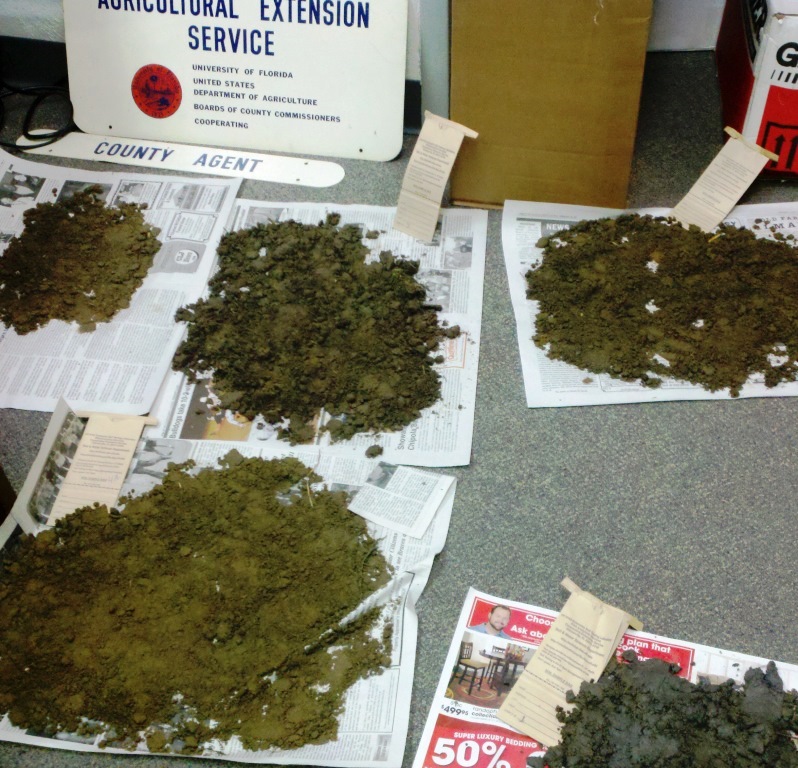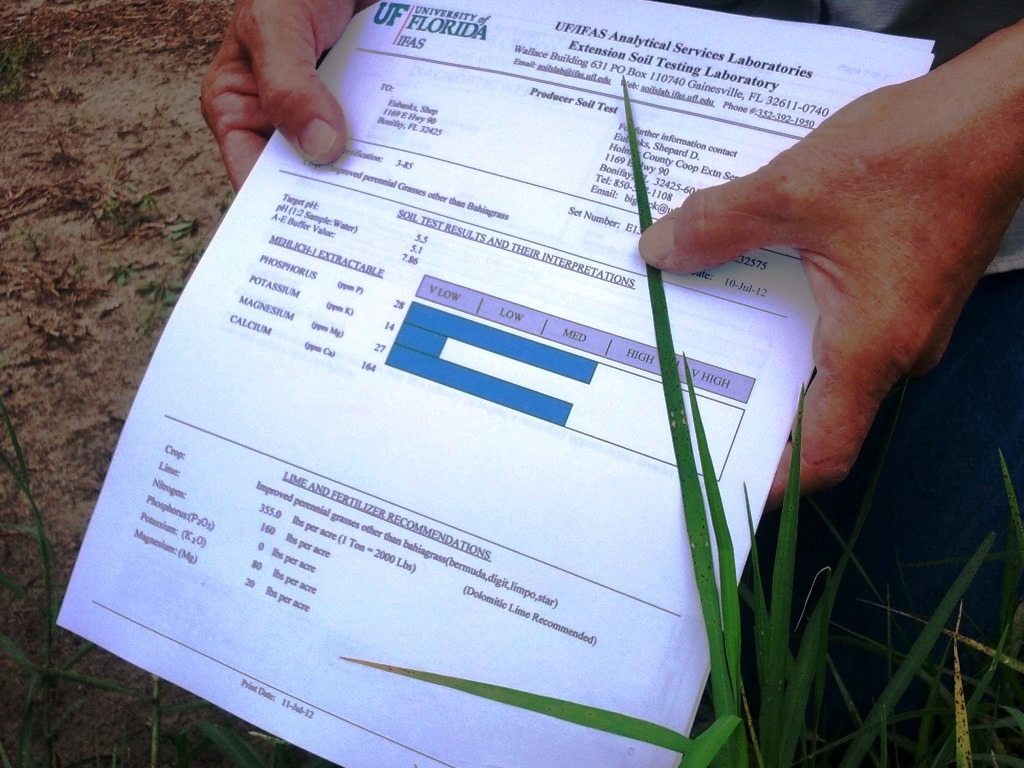There has been a change in the testing procedure at the UF/IFAS Lab which analyzes the nutrient profile of Florida’s soils. The Extension Soil Testing Laboratory (ESTL) has replaced the Mehlich 1 (M1) test with the Mehlich 3 (M3) test, but the question from many is why and what does this mean to the user of these services?
Soil testing is a critical component of modern agriculture. Proper use of the results will affect plant health, the farm or ranch’s financial position, and water quality in the area.
This multistage procedure starts with sample collection in the field or pasture then moves to the laboratory for assessment. At the lab a three-step process begins with nutrient extraction from the soil sample and analysis, next is the interpretation of test results, and finally nutrient recommendations for the grower.
During the 1970s, Florida along with several other southeastern US states, adopted M1 as the official extractant for acidic soils. This adoption was a result of the continued search for improved methods, accuracy, low cost and quick turnaround, but there were limits.

Producers rely on accurate soil analyses upon which to base their fertilizer application decisions. Photo by Judy Ludlow
When exposed to a neutral or alkaline pH soil, M1 rapidly loses effectiveness because the dilute acids used for the test are neutralized. M1 is also rendered ineffective in soils with high cation exchange capacity (CEC), high aluminum (Al) and iron (Fe) accumulation, and with more than five percent organic matter.
To overcome the limitations of M1, Dr. Adolph Mehlich improved the chemistry and developed the Mehlich-3 (M3) extraction solution. In the M3 test, the two dilute double acids used in M1 have been replaced with improved extractants.
State Extension laboratories in several southern US states, including Florida, have moved to the M3 extraction procedure because of its improved efficiency, especially for micronutrients, and its broad range of applicability. Additionally, the M3 procedure has been the only soil test extraction method validated through interlaboratory studies for extraction of plant-available phosphorus and used as a reference method for testing soil materials for extractable phosphorus.
The bottom line to the producer is the M3 test provides more accurate information for more precise fertilizer application recommendations. To learn more about this improved test, read: Extraction of Soil Nutrients Using Mehlich-3 Reagent for Acid-Mineral Soils of Florida.
- The Federal Reserve’s Beige Book Outlook for the Near Future - August 9, 2019
- Creeping Indigo: Get Ahead of the Problem Now - March 1, 2019
- Horse Hooves Need Extra Care in Wet Pastures - February 15, 2019

